2025 October
The Best Things to Do in Taipei: The Ultimate Guide
(Map Included)
by Evi


Taipei, the capital of Taiwan, has emerged from its history as a bridge between traditional Chinese culture and modern urban development. Founded in the 18th century, it now boasts a thriving economy driven by innovation, technology and prosperity. At the same time, the island's relationship with China remains politically and culturally complex: while ties are close, both historically and culturally, Taiwan claims its own distinct identity and operates as a democratic and independent entity.


1. Discover the Cultural Treasures of the National Palace Museum
If you love history and art, the National Palace Museum is like stepping into a time capsule of China’s imperial era. Its collection includes nearly 700,000 objects, from Ming Dynasty porcelain to rare calligraphy and bronzes dating back 3,000 years. The museum’s history is fascinating in itself: it was originally founded in Beijing in 1925, but was moved to Taiwan in 1949 to protect the treasures from the Chinese Civil War. Today, it’s located in Shilin, amidst lush gardens and modern buildings that blend Chinese architecture with minimalism. Allow at least half a day to browse the exhibits and enjoy a coffee in the restaurant overlooking the garden.
Opening hours: Tuesday – Sunday, 09:00 – 17:00 (closed on Mondays).
2. Experience the Everyday Life at Taipei Markets
Hungry? Want to see the city come alive at night? Taipei’s night markets are the pulse of the city, a mix of street food, games, shopping and social life. Start at Shilin Night Market, the city’s most famous and largest market, which has been operating since the early 20th century. There you will find everything: from the legendary stinky tofu, juicy pepper buns baked in barrel ovens to fresh fruit juices. If you want a more authentic atmosphere, head to Guangzhou or Huaxi Night Market (also known as Snake Alley), near Lungshan Temple, for traditional snacks and a more leisurely stroll. Raohe Street Market, with its impressive gate, is ideal for a food crawl: don’t miss the black pepper bun baked in front of you. For a more local vibe, head to the Linjiang Night Market (Tonghua), a local favorite, or Ximen Market, which combines food with fashion and pop culture.
And if you’re in town on the weekend, stop by Jianguo Flower Market and Jade Market, two colorful open-air markets under the highway: here you can buy everything from bonsai and orchids to gemstones and jewelry. It’s a great way to see how locals spend their leisurely mornings.
Opening Hours: Most night markets are open daily, 5:00 PM – midnight (some stalls stay open until 2:00 AM), while the Flower & Jade Markets are open only on weekends, 9:00 AM – 6:00 PM.
3. Find Peace or Love at Lungshan Temple
If there’s one place that combines tradition, spirituality, and a little magic, it’s Lungshan Temple. Built in 1738 by immigrants from Fujian, the temple is dedicated to the Goddess of Mercy Guanyin, but it also houses dozens of other deities from Buddhism, Taoism, and Chinese folk religion. Despite being damaged by earthquakes, typhoons, and even bombings during World War II, it was rebuilt each time, and today stands as a symbol of Taiwanese resilience and faith.
But beyond its spiritual value, Lungshan is also famous as a place of prayer for… love! Visitors stand before the god of marriage, Yue Lao, make offerings of flowers or fruit, and follow a special ritual: first they throw three wooden crescent moons (jiaobei blocks) on the floor to “ask” if they have the god’s approval, and if the sign is positive, they take a red thread which they keep as an amulet until they find their match. It’s a wonderful experience, even if you’re not particularly religious, you’ll be moved by the faith and devotion of the locals.
Opening Hours: Daily, 06:00 – 21:30. If you can, visit the temple early in the morning or during the afternoon prayer ceremonies (chanting), when the atmosphere is more devout.
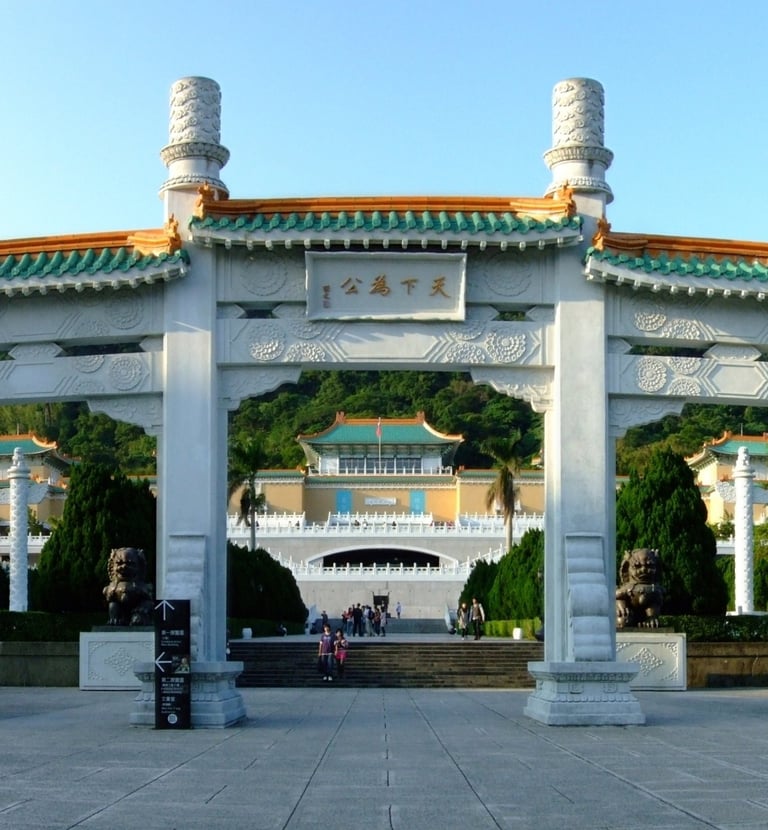

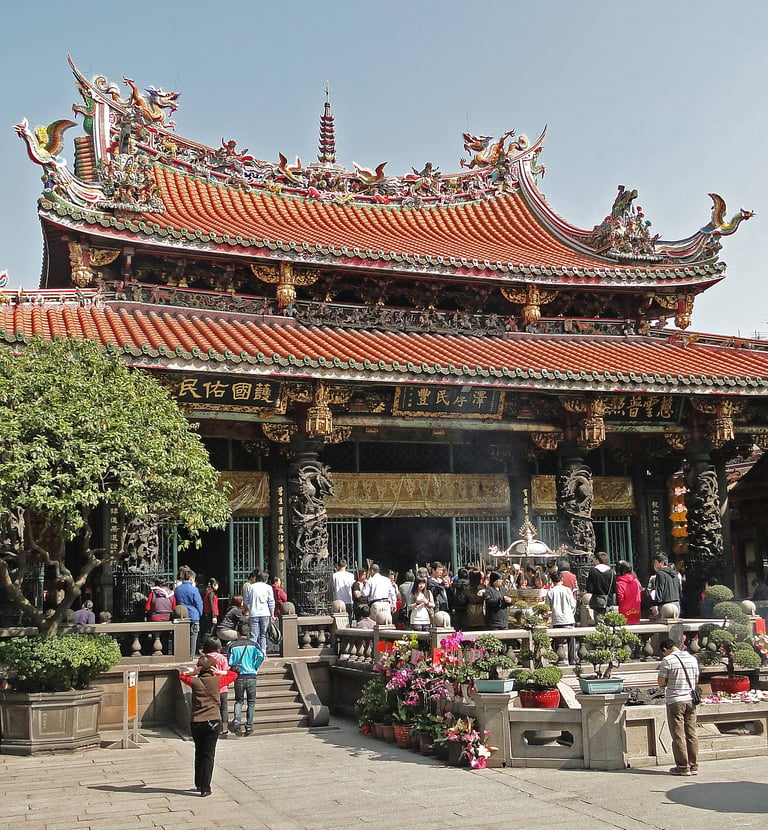


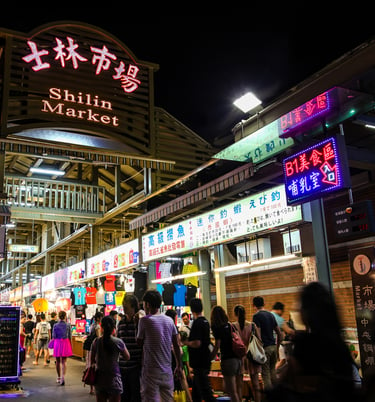
4. Discover History at Chiang Kai-shek Memorial Hall
In the heart of Taipei, the Chiang Kai-shek Memorial Hall stands tall with its striking white facade and blue roofs, as if it had sprung from a painting. Built in honor of the former president of the Republic of China who died in 1975, the memorial is surrounded by vast plazas, gardens and fountains, creating a sense of grandeur and tranquility. If you catch the changing of the guard in front of the Chiang Kai-shek statue, you’ll experience a spectacle that combines military discipline with cultural awe. But who was Chiang Kai-shek? He was a Chinese politician and military leader, leader of the Kuomintang (Nationalist Party of China) and head of state of the Republic of China from 1928 to 1949 on the mainland and then on Taiwan until his death in 1975. He played a central role in the overthrow of the Qing dynasty, led the Nationalist Government and fought against Japan and the Communist Party, before being defeated in 1949 and fleeing to Taiwan, establishing a dictatorship. After his death on 5 April 1975, Yen Chia-kan was sworn in as the new president of the Republic of China (Taiwan) and a month of mourning was declared. Chiang’s death removed the dominant political figure from the Kuomintang (KMT), but his son, Chiang Ching-kuo, succeeded him as party leader and later president, leading to major democratic reforms and the end of one-party rule in Taiwan.
5. Reflect at 228 Peace Memorial Park
After the hustle and bustle of the city, 228 Peace Memorial Park offers a breath of calm. Dedicated to the victims of the tragic 1947 uprising, the park now combines historical monuments, tranquil lakes, and verdant gardens. Wander the tree-lined paths, visit the small museum to learn about the history, and take some time to sit on the benches, enjoying the tranquility of the city center. But what happened on February 28, 1947? The February 28 Incident, as it is called, was an anti-government uprising that was violently suppressed by the Nationalist government of the Republic of China (ROC), led by provincial governor Chen Yi and Kuomintang chairman Chiang Kai-shek. Thousands of civilians were killed, and the incident is considered one of the most significant events in modern Taiwanese history and was the impetus for the Taiwanese independence movement. February 28 is now a public holiday called Peace Memorial Day.
But what led to the uprising? In 1945, after Japan's defeat at the end of World War II, the Allies handed over administrative control of Taiwan to China, ending 50 years of Japanese colonial rule. Local residents resented what they saw as arbitrary and often corrupt behavior by the Kuomintang (KMT) authorities, including arbitrary confiscation of private property, financial mismanagement, and exclusion from political participation. The flashpoint came on February 27, 1947, in Taipei, when agents of the State Monopoly Bureau beat a Taiwanese widow suspected of selling contraband cigarettes. An officer then fired into a crowd of angry bystanders, wounding one man, who died the next day. Soldiers fired on demonstrators the next day, and a radio station was seized by protesters, and news of the uprising was broadcast across the island. As the rebellion spread, the KMT-installed governor Che Yi called for military reinforcements and the rebellion was violently suppressed by the National Revolutionary Army. Two years later, and for 38 years thereafter, the island would be placed under martial law in a period known as the “White Terror.”
6. At the Heights of Modern Taipei with Taipei 101
Taipei 101 is not just a skyscraper, it is a symbol of the entire city. Built in 2004 and at 508 meters tall, Taipei 101 was once the tallest building in the world (it is now 11th) and the view from the observation deck is breathtaking: the city spreads out like a mapped canvas beneath your feet. In addition to the view, the area around the building is bustling with shopping malls, restaurants and cafes that give you the opportunity to combine shopping and sightseeing in a single trip.
Observatory opening hours: Daily 10:00 - 21:00 Tickets can be purchased here


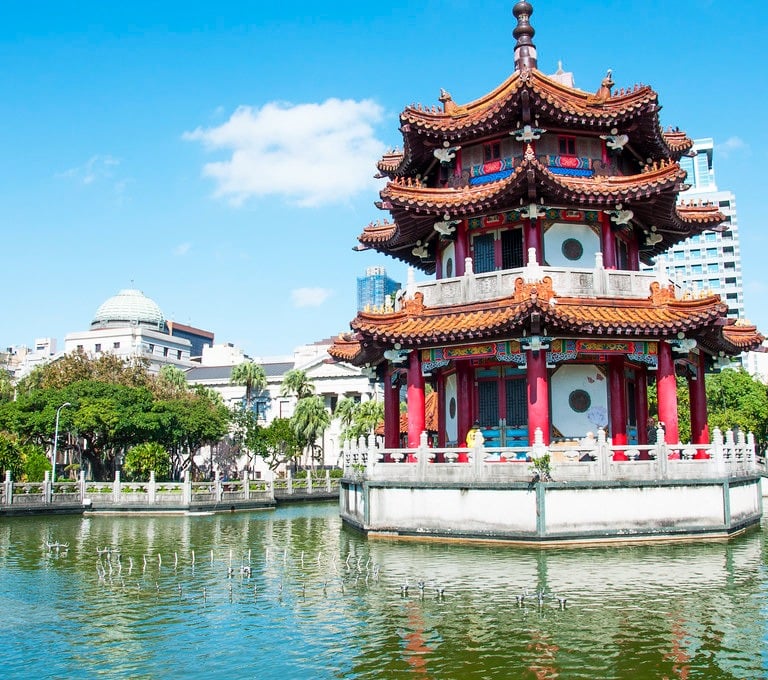



7. Songshan Ciyou Temple – Tradition and Color
Tucked away among the streets of the Songshan neighborhood, Songshan Ciyou Temple is a temple dedicated to the goddess Mazu and dates back to the 18th century. Its striking facade, colorful roofs, and intricate wood carvings create a sense of vibrancy and reverence. Local visitors come here to light incense and pray for prosperity, health, or love, making the temple a vibrant part of the city’s daily spiritual life. Every year, on Mazu’s birthday (the 23rd day of the 3rd lunar month), devotees visit the temple to pray and celebrate. Around this time, ritual offerings and an elaborate procession take place, with devotees carrying the statue of Mazu on a ceremonial palanquin (covered carriage) in a parade that also includes beautifully decorated chariots and battle battalions.
Opening Hours: 5:30 AM - 10:30 PM
8. Maokong Gondola – Scenic Ride
If you want to escape the city and find yourself among tea plantations and mountain peaks and admire the city from above, a ride on the Maokong Gondola is the ideal choice. The line has four stations: Taipei Zoo, Taipei Zoo South, Zhinan Temple and Maokong. After exiting the Taipei Zoo MRT station, the zoo entrance will be on your right, while for the gondola turn left and walk for five minutes. You can stop at Zhinan Temple, which was built in 1890 and is dedicated to the immortal Taoist Lu Tung-pin, better known as “Xiangong” or “Luzu”. The temple is essentially a complex of three temples. To visit all three you will follow the marked trail and it will take you a total of 45 minutes to complete your visit. The last stop is at Maokong Hill, where you will find traditional teahouses, restaurants and hiking trails such as to Silver Stream Cave. Most teahouses in Maokong also serve food. The main specialty here is a variety of tea-based dishes, such as tea ice cream, tea oil noodles, tea oil chicken, tea leaf fried rice, tea-baked eggs, tea-flavored tofu and more. Here you can try one of the two main teas grown in this region, baozhong or tieguanyin.
Opening Hours: 9:00 - 21:00 Ticket Cost NT$180 one-way NT$300 day pass, you can also use EasyCard. Note that the gondola is closed on Mondays, so plan your trip accordingly. If you want a little extra magic, the glass-floored Crystal Cabin costs an additional NT$50 per way.
9. Gongguan Waterfront Plaza – Walk and Relax
Gongguan Waterfront Plaza offers an oasis by the Xindian River, perfect for a leisurely stroll or to enjoy street food and local delicacies. The atmosphere is lively, especially in the afternoons, and many students from nearby National Taiwan University set up improvised games and outdoor events, creating a youthful, dynamic atmosphere. You can rent a bike here to explore the city’s extensive bike path system along the river. YouBike/Ubike started as the Taipei Bike Sharing System, but has gradually spread across the country, replacing other local ones. You can rent a YouBike for a full hour for a similar price to a short MRT ride. In short, to rent a YouBike, you will need to: 1. Download the YouBike 2.0 app 2. Register your EasyCard in the app using a Taiwanese phone number (SIM card required) or your credit card and email if you don’t have a local number 3. Scan the bike’s QR code with your app to borrow bikes from any YouBike Station.
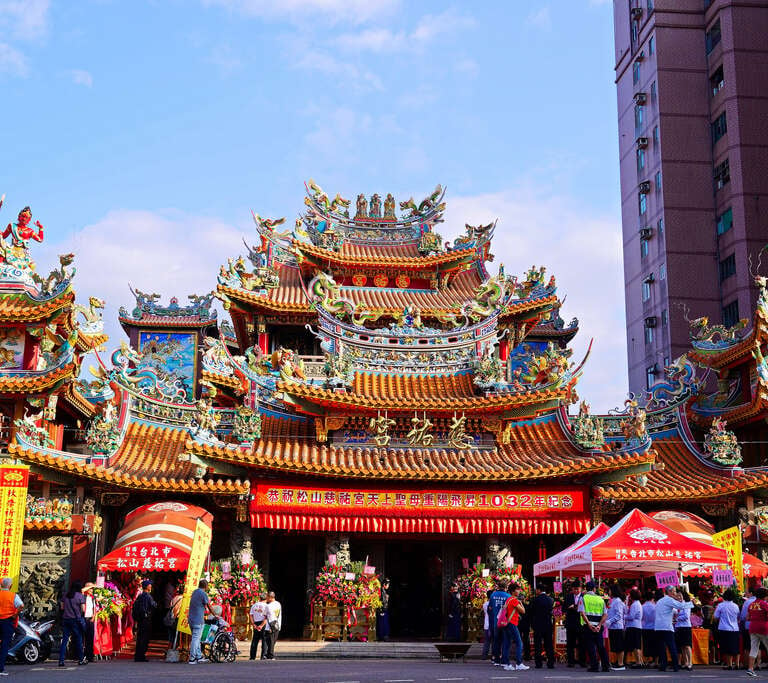

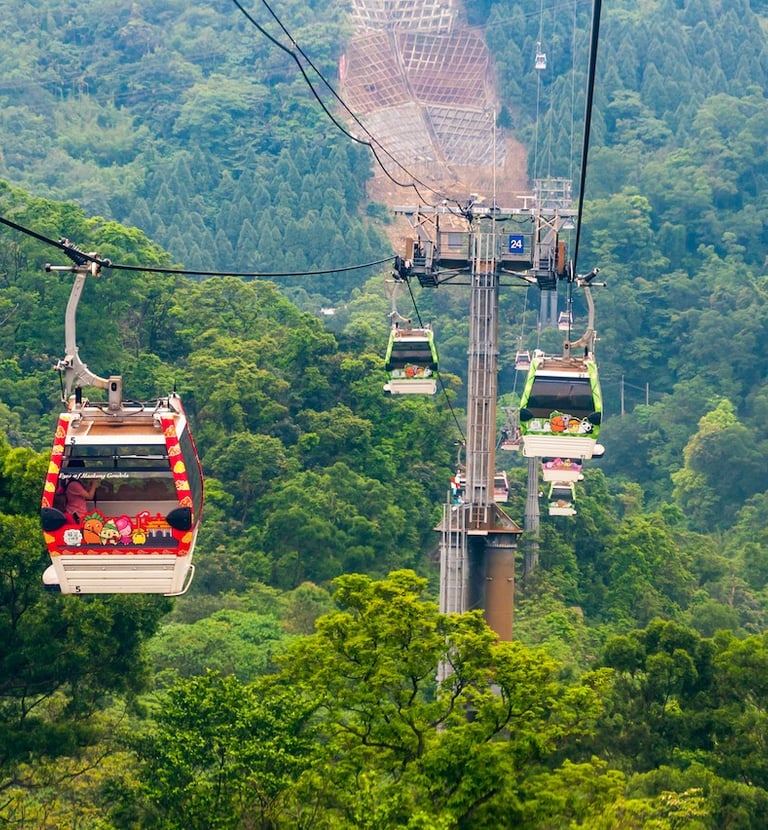

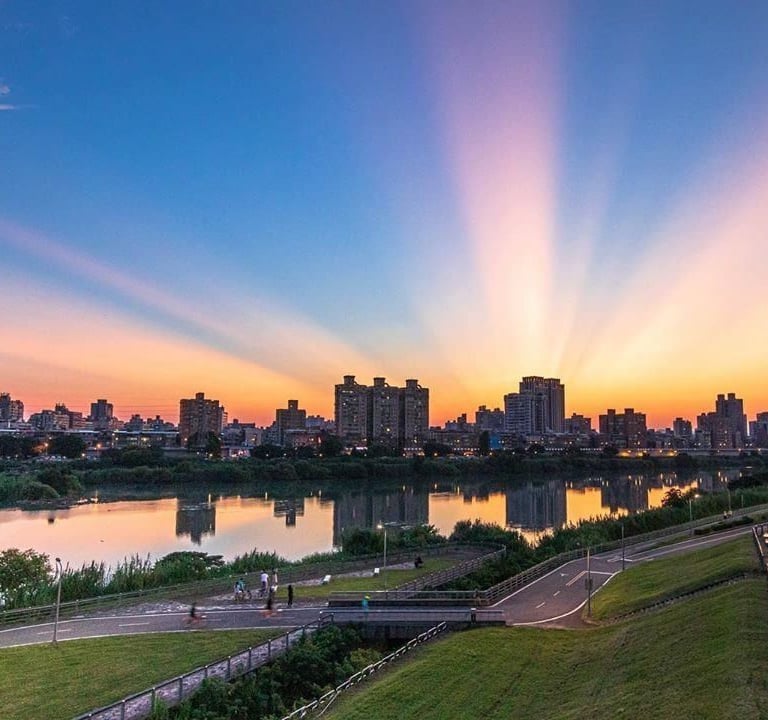

10. Ximending Walking District – The Youth’s Hangout
Ximending, or Shi-men Ting, is the heart of Taipei’s youth and pop culture. Small fashion shops, cafes, bars and local street food stand next to colorful graffiti-covered walls. Here you can find the latest trends, as well as hidden alleys with local food, such as bubble tea, grilled squid and dumplings. It is the ideal area for evening walks and photos with a vibrant urban background. Ximending became a famous theater district in Taipei in the 1930s and experienced even greater prosperity after the defeat of Japan. The most popular attraction is the historic Red House Theater, built in 1908 by Japanese architect Kondo Judo. At one time, Wuchang Street was home to more than ten theaters. Today, Ximending has over twenty theaters and six thousand shops, and is a popular area for small concerts, album launches, and street performances. It is also home to the Red Envelope Clubs, which were founded in the 1960s.
11. Dihua Street & Dadaocheng Wharf Container Market
Dihua Street, Taipei’s oldest street, takes you back to another century with its traditional shops selling herbs, fabrics, and handicrafts. The street, then known as Main Street, was built in the 1850s when many trading companies owned by owners originally from Quanzhou moved from Bangka. From then on, and throughout the rest of the 19th century, Dihua Street was an important center for the trade of Taiwanese goods and products such as Chinese medicinal herbs, textiles, incense materials, and for the processing of Taiwanese tea. As the oldest street in Taipei (with sections dating back to the Dutch rule of Formosa from 1624 to 1661), its architecture is under city preservation. At the nearby Dadaocheng Wharf Container Market, old warehouses have been transformed into lively markets and restaurants, combining history, food, and modern creativity, a must for photos and to feel the coexistence of old and new.
12. Xiangshan – The Elephant Trek
Xiangshan (Elephant Mountain) is the ultimate hiking experience that rewards you with a panoramic view of Taipei and Taipei 101. The 183-meter climb to the top is relatively short but intense, with steps and paths that climb the mountain, while your reward is the view of the city spread out before you, ideal for photos at sunset.
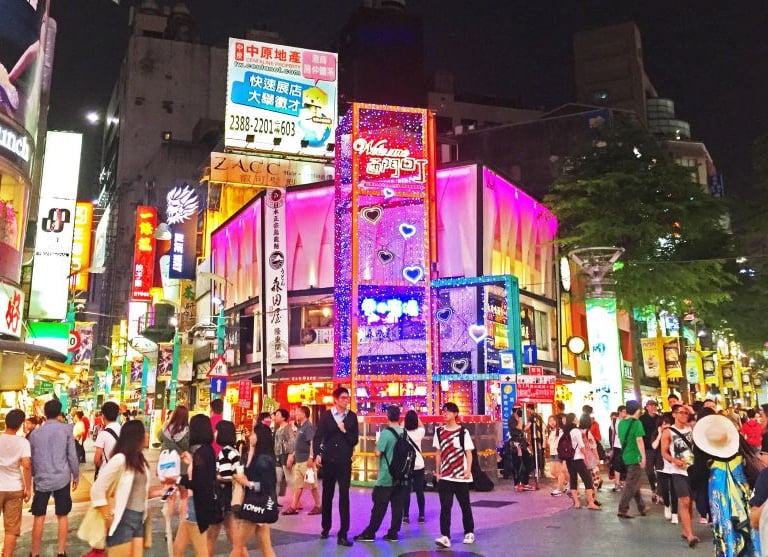


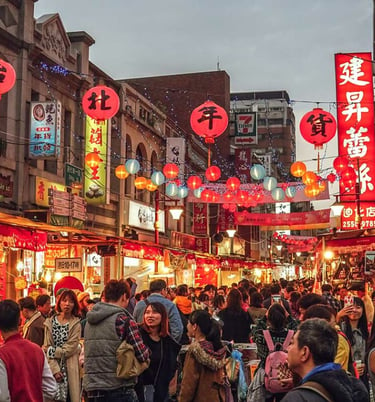
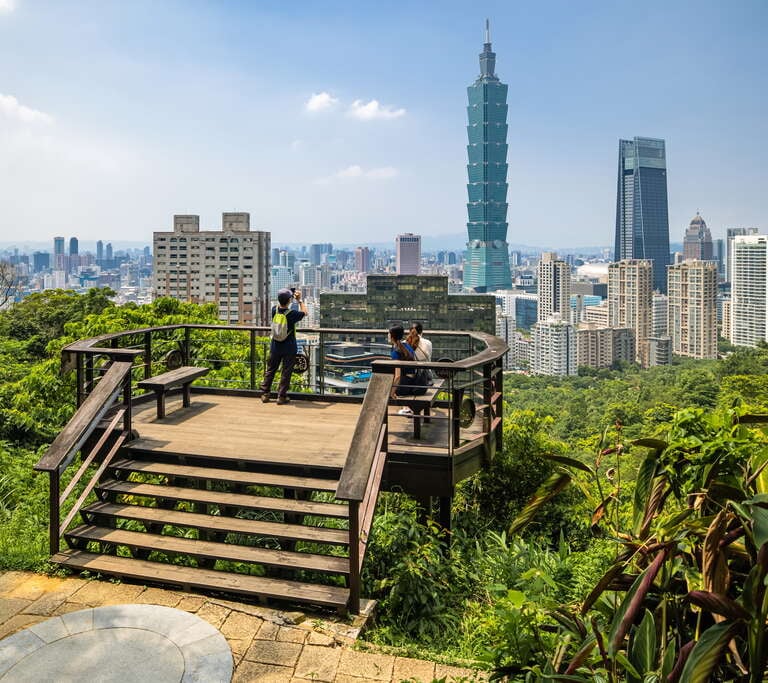

13. Tamsui Old Street, Fisherman’s Wharf & Lover’s Bridge – A Romantic Afternoon by the Sea
The Tamsui area, at the northern end of Taipei’s metro, is the perfect destination for an afternoon city escape. Start your walk at Tamsui Old Street, a seaside pedestrian street lined with street food stalls, cafes and small shops. Try local delicacies such as a-gei (fried tofu stuffed with noodles), fish balls and the famous iron egg – an egg cooked over and over in soy sauce until it becomes dark and full of flavour. From the pier (Tamsui Ferryboat Wharf), you can take a ferry either to Fisherman’s Wharf (15 minutes away) or across to Bali Old Street (just 5 minutes away). Fisherman’s Wharf is ideal for romantic strolls, seafood dinners and stunning photos at the iconic Lover’s Bridge, which is lit up in different colours every night, and the sunset here is magical.
If you cross over to Bali Old Street, you’ll find a more relaxed atmosphere with seaside bike paths, street markets, stalls selling local snacks like sweet potatoes, grilled squid and handmade ice cream. You can visit the Shihsanhang Museum of Archaeology or rent a bike and ride along the river, enjoying the panoramic views of Tamsui from the opposite side.
Access: Take the MRT Red Line to Tamsui Station. From there, walk 10 minutes to Old Street or rent a YouBike. For Fisherman’s Wharf, choose the ferry (15–20 minutes) or the R26 bus (15 minutes). For Bali Old Street, take the boat across the street (5-minute ride).
Opening hours: Old Street and Bali Old Street are lively all day, but get their best atmosphere in the afternoon. Boats run from around 10:00–20:00 (fewer services on weekdays). Lover’s Bridge is open 24 hours, so it’s best to visit at sunset.
14. Beitou – Taipei’s Hot Spring Paradise
If you want to escape the hustle and bustle of the city and relax, Beitou is the perfect destination. Just 30 minutes by MRT (Red Line to Beitou Station, then transfer to the local Xinbeitou Line), this neighborhood has been famous for its hot springs since the Japanese occupation era (1895–1945), when the Japanese established the first public baths here. Start at the Beitou Hot Spring Museum, a beautiful wooden building of Japanese architecture that was once the largest public bath in Asia. There, you’ll learn the history of the hot springs, see old photos, and discover how the entire area developed around them. Then walk to Thermal Valley (also known as Hell Valley), a spectacular geothermal lake with water that boils at 80–100°C and produces steam that creates an almost magical atmosphere. For the ultimate relaxation experience, head to Long Nice Hot Spring, one of the most popular public baths in the area. There you can enjoy different pools with temperatures ranging from lukewarm to very hot, as well as cold pools for alternating temperatures, ideal for rejuvenation. If you prefer more privacy, there are many private onsen-style baths and hotels in the area that offer double rooms with a private bathtub filled with hot spring water.
15. Try a Traditional Breakfast in Taipei
No trip to Taipei is complete without starting your day with a traditional breakfast. The city is famous for its soy milk shops, small shops that serve hot soy milk, savory and sweet treats, and street snacks that will make you feel like a local. At Yong He Soya Milk, try the pork steamed buns and fluffy egg pancakes, while at Ding Yuan Soy Milk, the pan-fried chive pockets stand out, crispy and full of flavor. Don't miss the classic Fuhang Soy Milk, a favorite for its long, egg-fried pancakes and sweet or savory soy sauce, or Sihai Soy Milk, which combines quality and tradition. This experience is the perfect introduction to your day and immediately brings you into contact with everyday Taipei life.
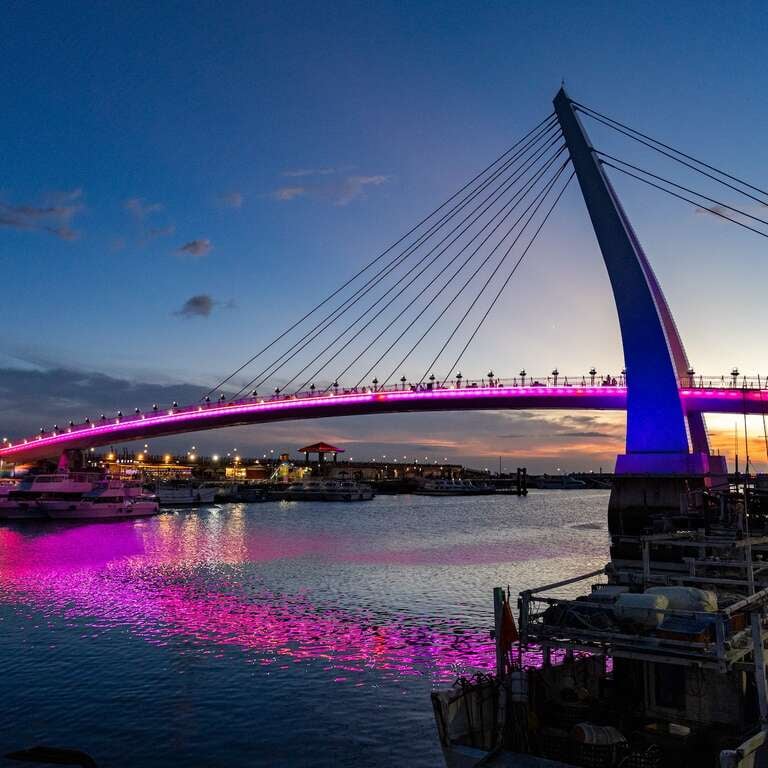

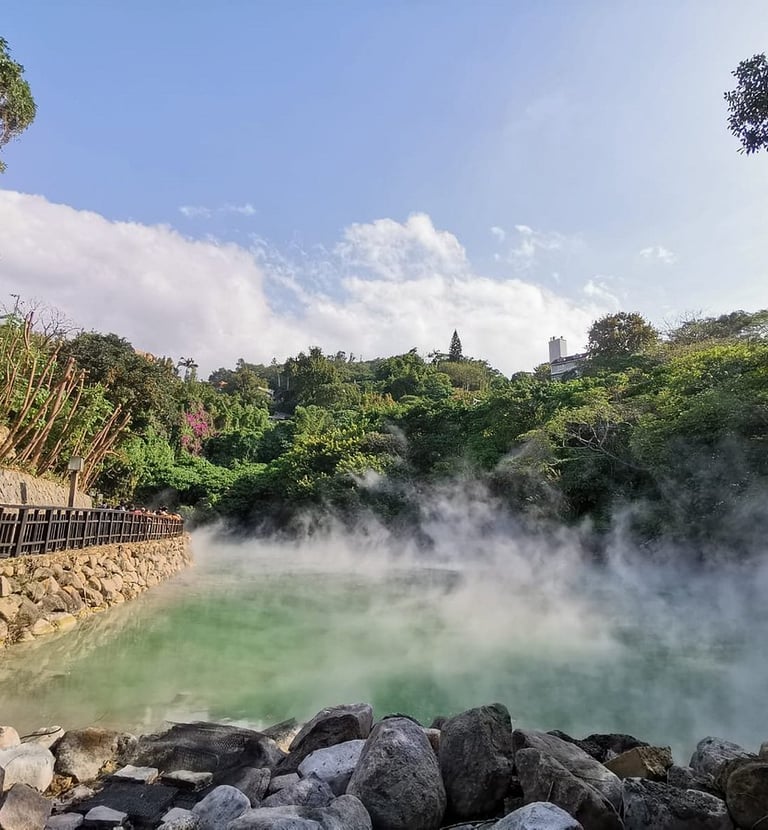



16. Shifen Old Street & Shifen Waterfall – Lanterns and Waterfalls
If you want to experience one of the most romantic and cinematic experiences in Taiwan, head to Shifen Old Street. The area was originally created as a station along the Pingxi Railway, which was built by the Japanese in the early 20th century to transport coal. Locals then began using sky lanterns to let community members know that it was safe to return to the village after periods of raids, epidemics, or danger. Over the years, this practice has turned into a cultural tradition, and today visitors write wishes on the lanterns before releasing them into the sky, an act that symbolizes hope and good luck. Grab a lantern and write your wishes before releasing it into the sky. Here, trains still literally pass between houses and shops, offering unique photo opportunities. After strolling through the alleys with small shops and local delicacies (try fried mushrooms or fresh passion fruit juice), walk about 20 minutes or take a taxi to the impressive Shifen Waterfall, also known as the “Little Niagara of Taiwan”. At about 20 meters high and 40 meters wide, it is the largest waterfall in Taiwan and forms a beautiful arch as it falls. There are observation platforms for perfect photos and nature trails for a peaceful walk.
Access: From Taipei, take the train from Taipei Main Station to Ruifang (about 50 minutes), and there change to the Pingxi Line to Shifen Station (30 minutes). From the station you are already on Old Street.
17. Yehliu Geopark – Taiwan’s Geological Treasure
Yehliu Geopark is one of Taiwan’s most impressive natural attractions and a must-visit for nature and photography enthusiasts. It is located on a narrow peninsula extending 1.7 km into the East China Sea and is famous for its bizarre rock formations, created by millions of years of erosion by wind and water. The most famous of all is Queen’s Head, a limestone rock that resembles the profile of a queen, so distinctive that it is considered a national symbol. Walking through the park, you will discover formations with names such as Fairy Shoe, Sea Candles and Mushroom Rocks. The area is divided into three zones: the first is home to the most famous formations, the second to more bizarre and rare rocks, while the third zone offers magnificent views of the ocean and is ideal for photos. Yehliu is also of historical interest, the area was of strategic importance due to its location on the sea, and today you can still see the old fortifications and the lighthouse.
Access: From Taipei Main Station, take the Kuo-Kuang bus 1815 to Jinshan Youth Activity Center and get off at Yehliu stop (about 90 minutes). From there, walk 10 minutes to the park entrance.
Opening hours: Daily, 08:00–17:00.
18. Jiufen Old Street – Journey to the Past and the Magic of Tea
Jiufen Old Street is one of Taiwan’s most famous mountain neighborhoods, built on hills overlooking the Pacific Ocean. It was founded in the 19th century and flourished during the gold rush, when the area became a trading and residential area for miners. Today, the narrow streets with stone steps, wooden houses and countless tea houses offer a nostalgic experience that takes you back in time. As you walk along Old Street, you will discover shops selling local sweets, souvenirs and handicrafts, while the smell of tea and baked street food fills the air. Don’t miss a visit to one of the traditional tea houses, where you can taste local mountain tea with a view of the illuminated hills and the ocean, the experience is especially magical at dusk, when the lanterns on the streets are lit up.
Access: From Taipei Main Station, take the train to Ruifang Station (about 50 minutes), and from there take a bus or taxi to Jiufen (about 15 minutes).
Opening hours: Old Street is lively all day long, but the best time to visit is from afternoon to evening (4:00 PM–9:00 PM), when the neighborhood is illuminated by lanterns and the atmosphere becomes magical.
Tip: You can combine the above three activities into an organized and comprehensive tour, such as the one from Klook.






19. Endless shopping
Zhongxiao Dunhua and Zhongxiao Fuxing are the heart of Taipei’s fashion and lifestyle scene, perfect for those looking to experience the city’s more stylish side. Zhongxiao Dunhua is known for its independent designer boutiques, concept galleries and hidden cafés like C25 and Belle Époque, while the 24-hour Eslite Bookstore is a must-see for book lovers. The side streets are filled with treasures from vintage fashion to handmade jewelry, and the atmosphere is perfect for a leisurely stroll. In contrast, Zhongxiao Fuxing offers larger shopping malls, international brands and a more vibrant nightlife. Both areas are easily accessible by MRT (blue line for Dunhua, blue or brown for Fuxing) and are most lively from 11:00 to 22:00, ideal for shopping, coffee and night strolling.
20. In the capital of stinky tofu
Shenkeng Old Street retains the architectural style of the late Qing Dynasty and the early Republic of China. The brick arches, stone walls, wide streets and low eaves take you back to the old days. The area is also a foodie’s paradise and the undisputed “capital of stinky tofu” in Taiwan, filled with small shops and stalls serving countless variations of the famous fermented tofu, fried, steamed, grilled or even in hot pot. Besides stinky tofu, you can try local snacks, peanut sweets and fresh tea. The atmosphere is charming, with red lanterns hanging over the alleys and locals sitting at small wooden tables enjoying their meal. It’s a perfect stop for a short trip from Taipei, you can reach it by MRT to Jingmei or Muzha and then a short bus ride.
Opening hours: Most shops are open 10:00–19:00, with the best time to visit in the afternoon, when the smell of tofu fills the air and the area takes on a more lively atmosphere.




How to Stay Connected
The internet connection in Taiwan is excellent. You can buy an eSIM before you travel through apps like Revolut eSIM, Airalo, or Nomad, so you have data from the moment you land. If you prefer a physical SIM, you can buy SIM cards at the airport (Taipei Taoyuan or Kaohsiung), from providers like Chunghwa Telecom, FarEasTone, and Taiwan Mobile. Plans are affordable, offering unlimited data for a few days or even a month. Additionally, Taiwan offers free public Wi-Fi hotspots in many cities, but your own connection is much more reliable.


How to Get Around
Public transport is among the best in the world, clean, safe and efficient with the MRT (metro) running to every corner of the city. Get an EasyCard (also known as Yoyo Card), which you can load and use on the metro, buses and even some convenience stores. The fare per trip is very low and there is English signage everywhere. You can buy and load the EasyCard at EZfly kiosks, MRT stations or convenience stores but only with cash. The cost of each card is NT$100 which is non-refundable, so if you are staying in Taiwan for a short time, it may not be worth getting one. Taxis are available, reliable and affordable, and you can use apps like Uber or 55688 Taxi.
A very popular means of transport is cycling. YouBike/Ubike started as the Taipei Bike Sharing System, but gradually spread across the country, replacing other local ones. With over 5000 Youbike stations and 600 million total rentals, renting a YouBike is a must-have experience in Taiwan. You can rent a YouBike for a full hour for a similar price to a short MRT ride. In short, to rent a YouBike, you will need to: 1. Download the YouBike 2.0 app 2. Register your EasyCard in the app using a Taiwanese phone number (SIM card required) or your credit card and email if you don’t have a local number 3. Scan the bike’s QR code with your app to borrow bikes from any YouBike Station.


Getting to and from Taipei Airports
The main airport is Taoyuan International Airport (TPE). The fastest option is the Taoyuan Airport MRT, which takes you to the center of Taipei (Taipei Main Station) in 35–50 minutes depending on which train you take, the express or the commuter (costing around NT$160). Both trains depart from the same airport station, every other train is an express. The first train from the airport is at 5:50 AM and the last train is at 11:35 PM. You can buy tickets from the automated machines at the entrance of each station. From there, you can transfer to the Taipei City MRT to head to your final destination. There are also buses, taxis (which only accept cash), and ride-hailing services like Uber. In case your flight arrives late at night, private cars are another option, you can book yours in advance through Klook.
Songshan Airport (TSA) is more central and serves mainly domestic flights, from there you can take the Taipei City MRT or taxi directly.


Taipei that enchants
Taipei is a city that harmoniously combines tradition with modern life. From ancient temples and historical museums, to bustling night markets and skyscrapers, the city offers something for every traveler. The hot springs of Beitou, the natural beauties of Yehliu and picturesque mountain areas such as Jiufen and Shifen create a unique balance between nature and culture. Taipei is not just a destination, it is an experience: a vibrant, colorful world full of flavors, stories and unforgettable images. Every corner, every alley and every view is an invitation to discover the heart of Taiwan, leaving behind everyday life and taking with you images, aromas and moments that you will remember forever.
Drop us a comment bellow
Check our other post for Taiwan
The Best Things to Do in Taipei (Map Included)
Taipei, the capital of Taiwan, has emerged from its history as a bridge between traditional Chinese culture and modern urban development. Founded in the 18th century, it now boasts a thriving economy driven by innovation, technology and prosperity. At the same time, the island's relationship with China remains politically and culturally complex: while ties are close, both historically and culturally, Taiwan claims its own distinct identity and operates as a democratic and independent entity.
Evi
10/31/202519 min read
